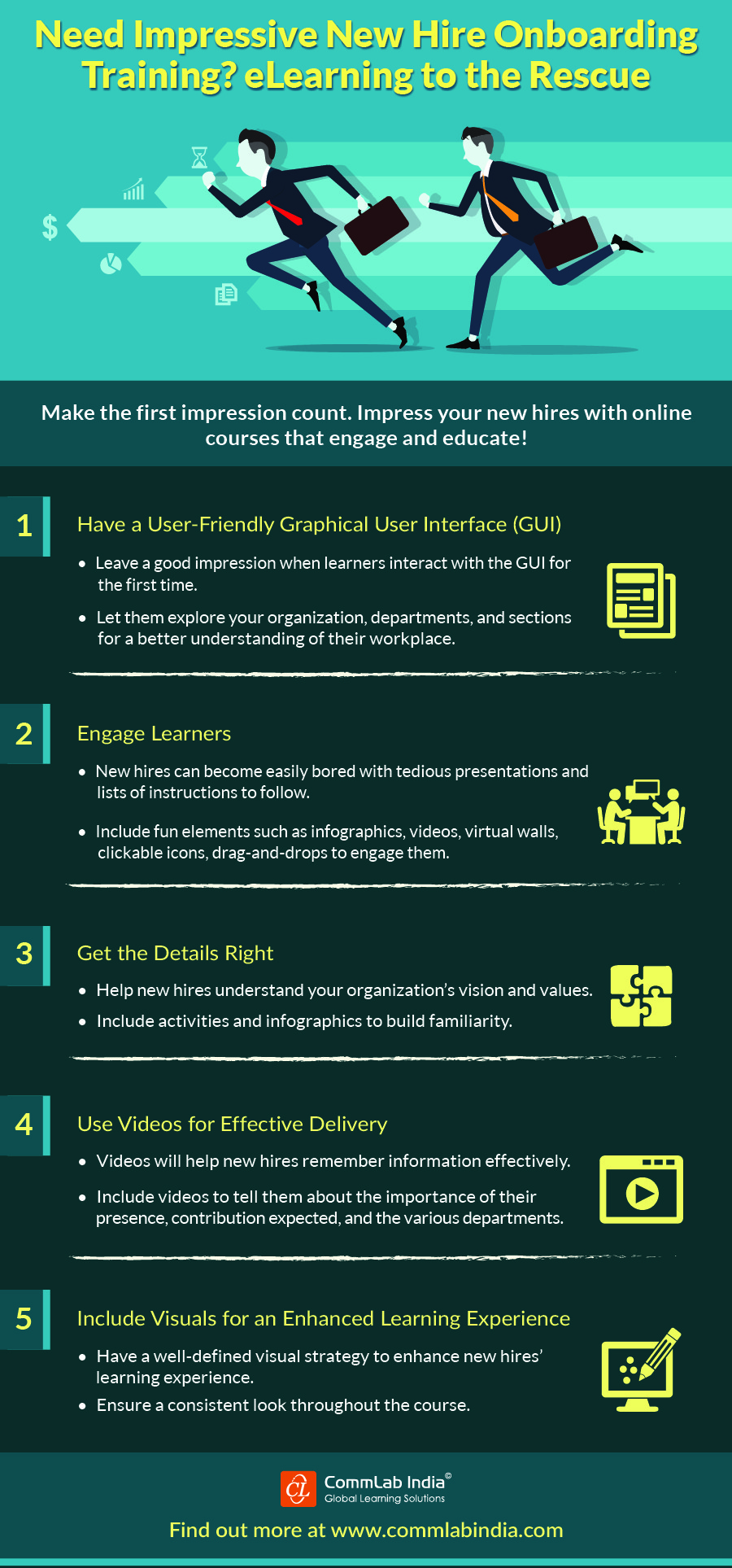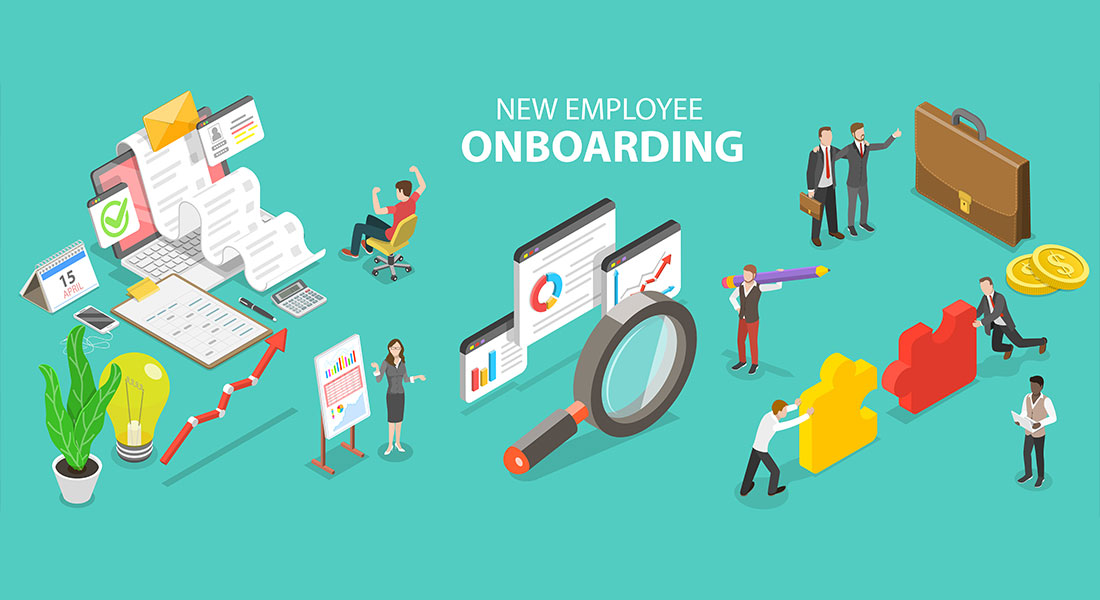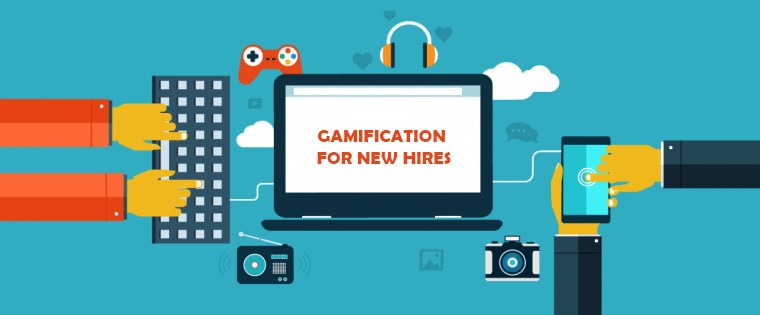Say Goodbye to Onboarding Woes with eLearning!

Employee onboarding is a make-or-break experience that sets the tone for a new hire's longevity and success within a company. A disorganized or ineffective employee onboarding process can leave new employees feeling disoriented, underprepared, and more likely to seek opportunities elsewhere. In today's dynamic and often remote working environments, traditional onboarding methods face limitations – they can be time-consuming, inconsistent, and difficult to scale. This is where eLearning solutions rise to the challenge, offering a flexible, engaging, and cost-effective way to streamline onboarding new employees and ensure every new hire has the support they need to thrive.

→ Download eBook: Corporate L&D Trends 2025 – Get the View from the Trenches
Table of Content
- Understanding the Importance of Employee Onboarding
- Defining Onboarding
- Delivering a Holistic Onboarding Experience with eLearning
- Navigating Onboarding Challenges
- Turning Challenges into Triumphs – A Success Story
Understanding the Importance of Employee Onboarding
According to Gartner, employees who feel committed to their new roles are 57% more likely to work harder and are nine times less likely to leave.
New hires are among the most valuable employees your company can have. Why? Because they are enthusiastic, willing to do their very best, and are generally eager to achieve. Unfortunately, so much of this potential is lost because most companies out there don’t know how to effectively onboard these new hires into their organization. When your onboarding program is inefficient, disconnected from your audience, or maybe even non-existent, you can bet that your new employee is going to start visiting Glassdoor.com and LinkedIn Jobs by the end of the week.
Defining Onboarding
Many people have onboarding confused with orientation. Orientation is usually a one-day affair that orients the new employee as to where they will work, important things they need to know, and stuff they shouldn’t ever do.
On the other hand, onboarding is a lengthier process (sometimes even lasting 6 months), that gets the employee up to speed on the following, at the minimum:
- Their role and how their work impacts the bigger picture of what your company does
- Your company’s vision, mission, and culture – and what those actually translate to, in reality
- Who they can reach out at work to if they need help or advice – a mentor or buddy system
- An understanding of how the organization is structured and how the business works
- Equipping new hires with the required access to the tools, training, and resources to go about doing their job efficiently
Doing all of the above through classroom (ILT) training can quickly get overwhelming. In general, onboarding via classroom training is unscalable, location-dependent, inconsistent in delivery, and hard to track.
Delivering a Holistic Onboarding Experience with eLearning
If you’re searching for a way to take your onboarding to the next level, eLearning is your savior. As a medium, eLearning is highly effective in conveying the kind of information that is usually prevalent in any onboarding program.
Whether you want to share your organization's vision, mission, and culture seamlessly, complemented by an inspiring message from your CEO or if you want to show new hires how to use certain software that will be a part of their daily job, eLearning would be the perfect, most scalable, consistent and trackable way to do it.
Bear with me for a second here as I quickly outline the questions that a new hire looks for in the first 1-6 months of their tenure:
- Why does my organization do (what it does)?
- What is my role?
- How do I do my job well?
- Who should I reach out to if I need anything?
For each of the above, eLearning can be the most effective medium to convey the required information. This also solves one of the most commonly heard ‘complaints’ from new hires about ILT onboarding – that the ILT programs are too few and far apart to have any sustained impact.
But using eLearning for onboarding training is that you can control all of it from a central location, and understand how the onboarding program is doing with just a couple of well-placed button clicks in your LMS.
Here are 5 ways to make onboarding training interesting with eLearning.
Navigating Onboarding Challenges
Want to Overcome Onboarding Challenges? Leverage eLearning Solutions!
Here are a few ways how they can help:
1. Controlled information flow
2. Standardized training
3. Personalized learning paths
4. Interactive and engaging content
5. Measurable results
Before exploring the benefits of eLearning in onboarding, it’s crucial to identify some of the common hurdles organizations face when integrating new hires, and how eLearning can provide custom solutions to overcome them. Let's break down these challenges in detail:
1. Information Overload:
New hires are often inundated with an overwhelming amount of information during their first few days or weeks. Policies, procedures, company culture, team structures, and job-specific knowledge are all thrown at them in a short period of time. This overload can lead to confusion, stress, and difficulty retaining crucial information. It may even hinder their ability to adapt quickly to their new role.
The Solution: eLearning helps manage this by providing a controlled information flow. Instead of overwhelming new employees, online onboarding platforms can break down complex topics into smaller, bite-sized microlearning modules. These digestible chunks of content are easier to process, and employees can revisit them at their own pace, ensuring they fully understand key concepts without feeling pressured to remember everything all at once.
Ever wondered how small, bite-sized lessons can make a big impact on learning? Let’s explore the concept of microlearning and why it’s transforming the way we absorb knowledge!
2. Inconsistent Delivery:
Traditional onboarding often relies heavily on in-person training sessions, which can vary significantly depending on the trainer's style, expertise, or even mood. This inconsistency can result in some employees receiving a better onboarding experience than others, leading to gaps in knowledge or a lack of uniform understanding across the team.
The Solution: eLearning offers standardized training, ensuring that every new hire receives the same high-quality experience, regardless of location or trainer availability. Online courses can be designed to deliver consistent, detailed, and accurate information, ensuring all employees start with the same foundation of knowledge. This not only boosts confidence but also ensures alignment with company goals and expectations.

Corporate L&D Trends 2025
Get the View from the Trenches
- Win with AI
- Design for the agile workforce
- Unlock scale, volume, quality
- Make an impact
- Much more
3. Lack of Personalization:
Many traditional onboarding programs take a one-size-fits-all approach, treating all new hires the same regardless of their backgrounds, experience levels, or learning preferences. This can lead to disengagement, frustration, and wasted time for employees who either feel the content is too basic or overwhelming.
The Solution: Custom eLearning solutions can offer personalized learning paths tailored to specific job-roles. With built-in assessments, these solutions identify each employee’s knowledge gaps and experience levels. Based on the results, employees are guided through targeted, role-specific content designed exclusively for your organization. This personalized approach not only keeps learners engaged but also ensures they’re focusing on what they need to succeed in their specific roles.
4. Limited Engagement:
Traditional onboarding methods, such as lengthy presentations, dense manuals, or repetitive lectures, can be monotonous and passive. This often results in new hires losing focus and failing to retain critical information, which can delay their ability to contribute effectively to the organization.
The Solution: eLearning addresses this issue by incorporating interactive and engaging content. Features like multimedia elements (videos, infographics), simulations, quizzes, and gamification transform onboarding into an active learning experience. These tools help employees stay engaged, reinforce learning through practice, and improve information retention, making onboarding not only effective but also enjoyable.
Struggling to make your onboarding process more impactful? Watch this video to explore proven strategies to design engaging eLearning courses that keep new hires excited and ready to succeed!
5. Difficulty in Measuring Success:
Evaluating the effectiveness of traditional onboarding programs can be difficult, as many rely on subjective feedback or lack the tools to gather meaningful data. Without measurable outcomes, it’s challenging to identify areas for improvement or understand how well new hires are adapting.
The Solution: Hosting eLearning on an LMS delivers measurable results through built-in analytics and reporting tools. An LMS allows organizations to track key metrics like learner progress, course completion rates, and assessment scores. This centralized platform streamlines the onboarding process, enabling leaders to optimize training content, address common challenges, and ensure new hires are fully prepared to succeed.
Exploring the Benefits of Leveraging eLearning for Onboarding Training
Increases the Productivity of New Hires
eLearning plays an important role in increasing the productivity of new hires during and after the employee onboarding training. eLearning courses are designed in a learner-centric and interactive manner. Therefore, it allows new employees to quickly acquire the knowledge and skills they need to perform their job responsibilities. Employees can learn at their own speed, which helps to reduce stress and anxiety, and can make the onboarding process more enjoyable. Additionally, eLearning allows employees to access training materials and resources at any time, making it easy for them to review and reinforce their learning.
This helps employees retain the information they’ve learned and apply it in the workplace. Furthermore, you can design immersive, engaging eLearning courses by including various interactivities, activities, infographics, videos, animations, etc. These elements break the text monotony in the learning experience and provide learners with an opportunity for active learning which is more effective than passive learning. With eLearning, new hires will be well-prepared to hit the ground running, which leads to increased productivity, less time spent on training, and a more efficient onboarding process.
Enhances Information Retention Rate among the Employees
Enhanced employee retention is another added of leveraging eLearning in employee onboarding. eLearning helps to keep employees engaged and motivated throughout the onboarding process as it facilitates an interactive and immersive learning experience. The self-paced nature of eLearning augments better retention and recall among the employees as they acquire the information at their own speed and in their own style. This aspect thereby helps to reduce frustration and burnout and boosts information retention rate.
Even better, eLearning provides an opportunity for active learning which is more effective than passive learning. It can include different types of interactivities, assessments, quizzes, simulations, etc., that help employees to apply what they have learned.
With improved retention rate, new hires will be more confident and better prepared to perform their job responsibilities. This in turn will lead to increased job satisfaction and a more positive perception of the company. You can even use eLearning to provide new hires with ongoing training and support, which can help to keep them engaged and motivated throughout their tenure with the company. This can lead to increased employee retention and a more productive workforce.

Corporate L&D Trends 2025
Get the View from the Trenches
- Win with AI
- Design for the agile workforce
- Unlock scale, volume, quality
- Make an impact
- Much more
Improves Employee Engagement
Employee engagement is crucial in determining the effectiveness and interest of corporate training. If your employees are not interacting or engaging with the training material, you won’t be able to maximize training ROI. But don’t worry! eLearning is an effective way to increase employee engagement during the onboarding process.
It facilitates an interactive, self-paced, and engaging learning experience for the new employees, thereby ensuring improved participation and motivation throughout the onboarding process. The interactive element of eLearning helps to make the learning experience more enjoyable and effective. With that said, it also allows the new employees to actively apply what they have learned and not just passively receive information. For this, you can make use of different instructional design strategies like microlearning, scenario-based learning, simulation, and more.
This helps to improve employee engagement. With that said, eLearning also fosters employee engagement as it encompasses various interactive elements such as videos, animations, interactive PDFs, infographics, audio, and gamified elements. These elements make the learning experience more immersive and engaging. So incorporate eLearning to make sure your new employees are more engaged, motivated, and invested in the onboarding process and in the company.
Turning Challenges into Triumphs – A Success Story
Our client, a leading global travel platform faced the challenge of redesigning their New Hire Training curriculum for sales, business development, and customer success teams—all while their software underwent updates. CommLab India stepped in with a simulation-based eLearning solution, creating 3 tailored learning paths. The result? Over 250 minutes of training content delivered in just 5 months, despite constant software changes.
Curious to know how we made it happen? Discover all the insights in the full case study!
Wrapping up!
eLearning is the ultimate solution to tackle onboarding challenges. It ensures a consistent, scalable process that eliminates confusion and streamlines the learning journey for every new hire. Say goodbye to outdated manuals and unstructured onboarding training sessions—eLearning keeps it engaging, interactive, and to the point.
Investing in eLearning means empowering your new hires to hit the ground running. It transforms onboarding into a seamless experience, helping them quickly adapt, contribute, and feel like valued team members. Ready to level up your onboarding training game? eLearning makes it possible!
As we approach the dawn of 2025, let this free eBook, "Corporate L&D Trends 2025" be your go-to guide. From emerging AI-based learning technologies to evolving learning strategies, it covers it all. So, level up your onboarding game by embracing eLearning and stay ahead of the curve with the latest trends in learning and development.






